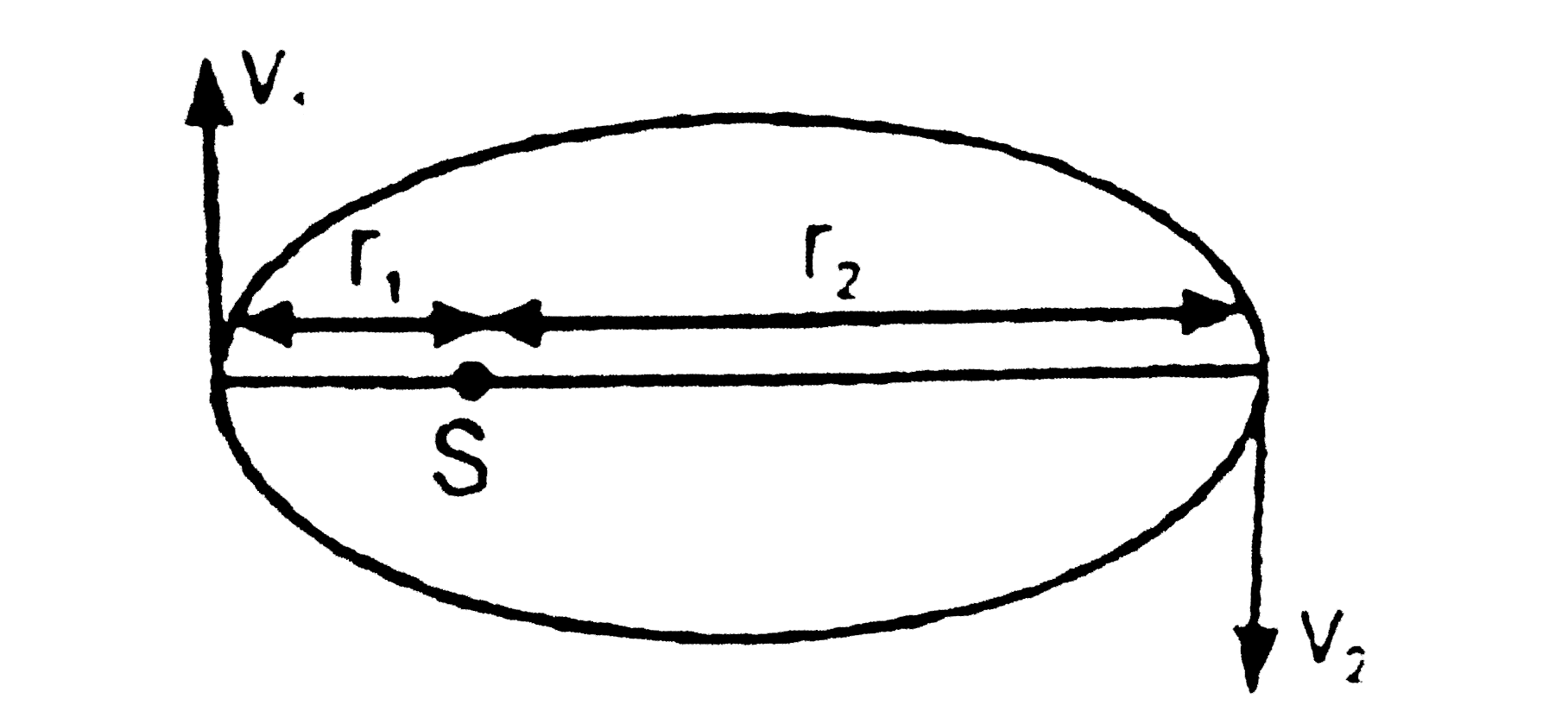If earth is revolving in elliptical orbit around sun, then which of the following quantity remains constant w.r.t.
Angular speed
Angular momentum
Linear speed
Kinetic energy
To solve the problem of which quantity remains constant when the Earth revolves in an elliptical orbit around the Sun, we can follow these steps:
Step 1: Understand the Motion
The Earth moves in an elliptical orbit around the Sun. According to Kepler's laws of planetary motion, the orbit is not circular, and the distance between the Earth and the Sun changes as the Earth moves along its path.
Hint: Remember that the nature of the orbit affects the quantities that can remain constant.
Step 2: Analyze the Forces
The gravitational force between the Earth and the Sun acts as a central force. A central force does not exert torque about the center of the force, which in this case is the Sun.
Hint: Consider how forces act in a central force system and their implications on motion.
Step 3: Consider Angular Momentum
Angular momentum (L) for an object moving in a central force field is given by the formula:
L=mvr
where m is the mass, v is the tangential velocity, and r is the distance from the center of rotation (the Sun). Since the gravitational force does not exert torque, the angular momentum remains constant.
Hint: Think about the conservation laws in physics, particularly for systems with central forces.
Step 4: Evaluate Other Quantities
- Linear Momentum: The linear momentum (p) is given by p=mv. Since the velocity of the Earth changes as it moves through its elliptical orbit, the linear momentum is not constant.
- Angular Speed: The angular speed also changes because the distance from the Sun varies, affecting the speed at which the Earth moves.
- Linear Speed: The linear speed of the Earth varies as it moves closer to or further from the Sun in its elliptical path.
- Kinetic Energy: The kinetic energy varies as well, being greater when the Earth is closer to the Sun and lesser when it is further away.
Hint: Assess each quantity's dependency on distance and speed to determine if it remains constant.
Step 5: Conclusion
From the analysis, the only quantity that remains constant as the Earth revolves around the Sun in an elliptical orbit is the angular momentum.
Final Answer: The correct option is B: Angular Momentum.
The Earth moves in an elliptical orbit around the Sun. According to Kepler's laws of planetary motion, the orbit is not circular, and the distance between the Earth and the Sun changes as the Earth moves along its path.
The gravitational force between the Earth and the Sun acts as a central force. A central force does not exert torque about the center of the force, which in this case is the Sun.
Angular momentum (L) for an object moving in a central force field is given by the formula:
L=mvr
where m is the mass, v is the tangential velocity, and r is the distance from the center of rotation (the Sun). Since the gravitational force does not exert torque, the angular momentum remains constant.
- Linear Momentum: The linear momentum (p) is given by p=mv. Since the velocity of the Earth changes as it moves through its elliptical orbit, the linear momentum is not constant.
- Angular Speed: The angular speed also changes because the distance from the Sun varies, affecting the speed at which the Earth moves.
- Linear Speed: The linear speed of the Earth varies as it moves closer to or further from the Sun in its elliptical path.
- Kinetic Energy: The kinetic energy varies as well, being greater when the Earth is closer to the Sun and lesser when it is further away.
From the analysis, the only quantity that remains constant as the Earth revolves around the Sun in an elliptical orbit is the angular momentum.
Topper's Solved these Questions
Similar Questions
Knowledge Check
A planet is revolving in an elliptical orbit around the sun. Its closest distance from the sun is r and the farthest distance is R. If the velocity of the planet nearest to the sun be v and that farthest away from the sun be V. then v/V is
AR2/r2Br2/R2CR/rDr/RWhen a satellite moves around the earth, the quantity which remains constant is
Aangular veloctiyBkinetic energyCpotential energyDaerial velocity
Two ordinary satellites are revolving round the earth in same elliptical orbit, then which of the following quantities is conserved :-
View SolutionWhen there is no external torque acting on a body moving in an elliptical path, which of the following quantities remain constant ?
View SolutionFor a satellite to orbit around the earth, which of the following must be true?
View SolutionA planet is revolving around the sun in an elliptical orbit. Which out of the following remains constant.
(a) Linear speed (b) angular momentum
( c) kinetic energy (d) potential energy (e) total energy throughout its orbit.
View SolutionA planet is revolving in an elliptical orbit around the sun as shown in the figure. The areal velocity (area swapped by the radius vector with respect to sun in unit time) is:

View SolutionA satellite S is moving in an elliptical orbit around the earth. The mass of the satellite is very small compared to the mass of the earth.
View Solution